GEMINI
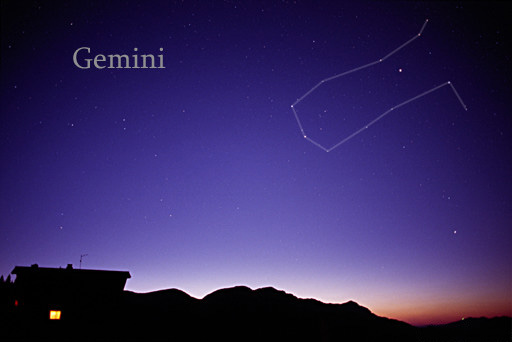
Till Credner - Own work, AlltheSky.com
CC BY-SA 3.0, wikimedia
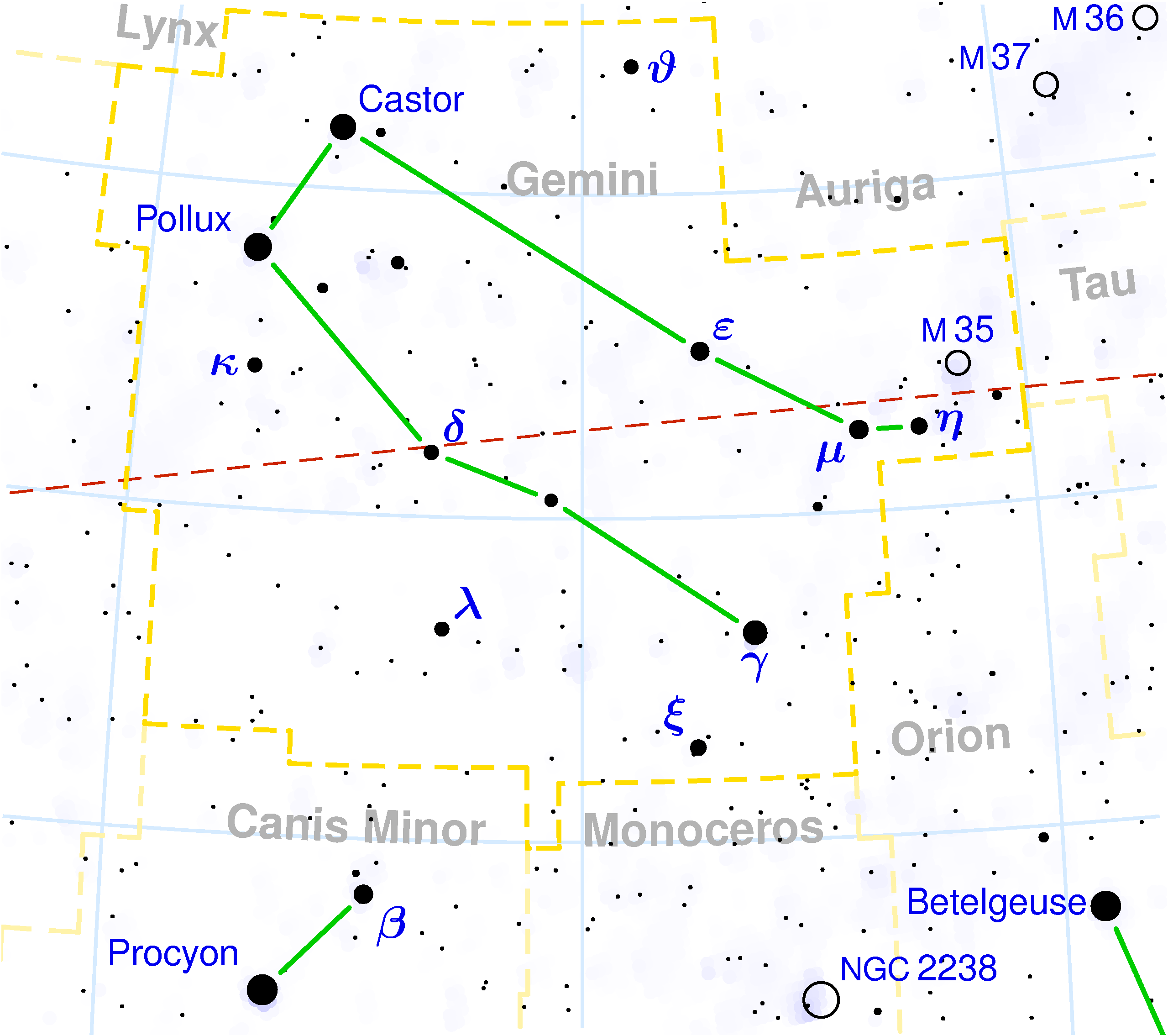
CC BY-SA 3.0, wikimedia
Gemini is one of the easiest constellations to see in winter, even in cities with light pollution, thanks to its brightly shining stars Castor and Pollux. The constellation is known for containing an important meteor shower called the Geminids, a rich shower of fireballs that peaks in mid December.
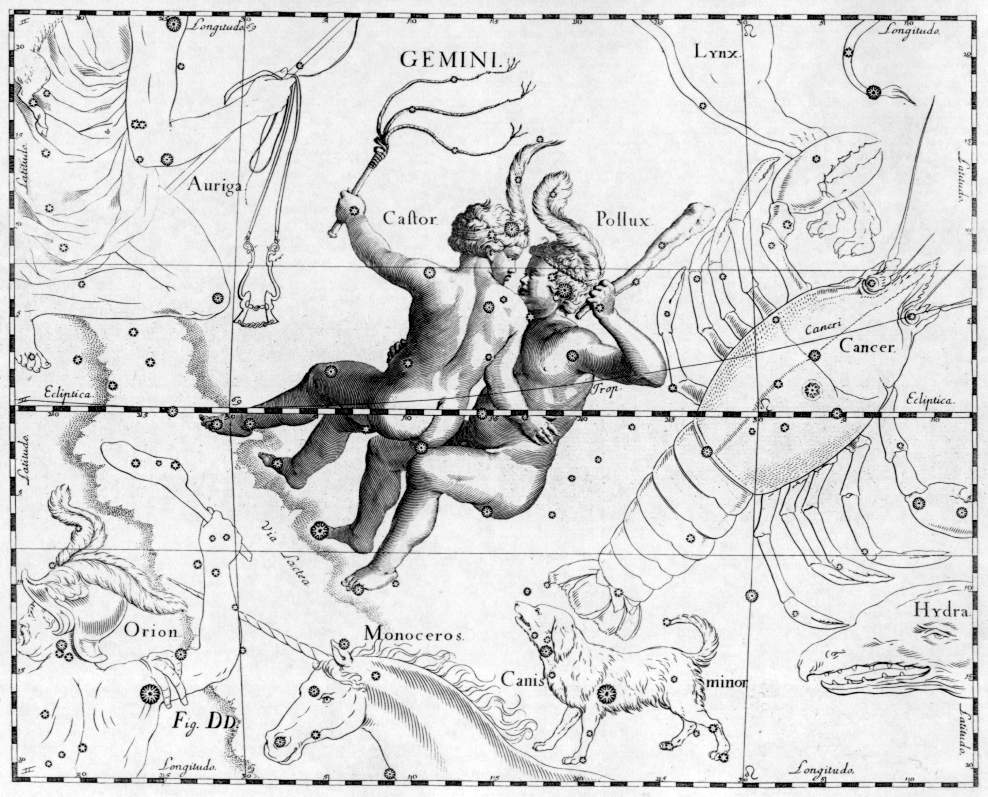
Johannes Hevelius (28 January 1611 – 28 January 1687)Scanned by Bronger - Atlas Coelestis.
Johannes Hevelius drew the constellation in Uranographia, his celestial catalogue in 1690.
CC BY-SA 3.0, wikimedia
In Greek mythology the Dioscuri (Gemini), the twins Castor and Pollux, were the children of Leda from Sparta who was impregnated by both her husband Tyndareus and by Zeus. She gave birth to four children, two immortals (Pollux and Helen) and two mortals (Castor and Clytemnestra). At the death of his brother Castor, Pollux asked Zeus to give him his brother’s immortality, which he did, and the brothers were placed near to one another in the skies.
In addition to being the second brightest star in the constellation, Castor is also one of the most beautiful multiple stars in the sky. Although it looks like a triple star, each component is in fact double and so the system is made up of 6 stars. It is slightly less than 51 light-years from us.
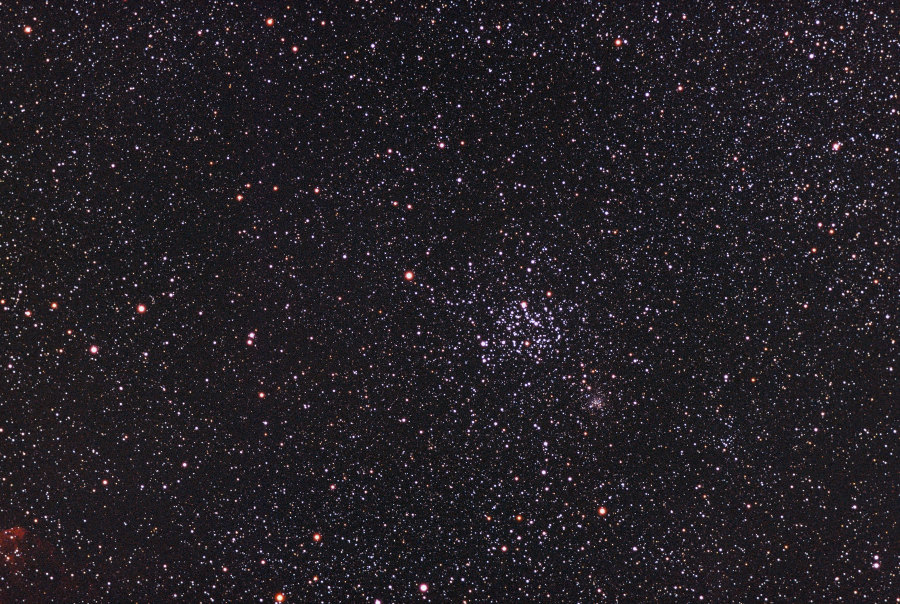
Oliver Stein - web site of Oliver Stein,
CC BY-SA 3.0, wikimedia
The open cluster M35 is in theory visible to the naked eye as a nebula but with a pair of binoculars, stars can be made out. It is 2,800 light-years from the Earth and its mass is equal to about 3,000 solar masses.
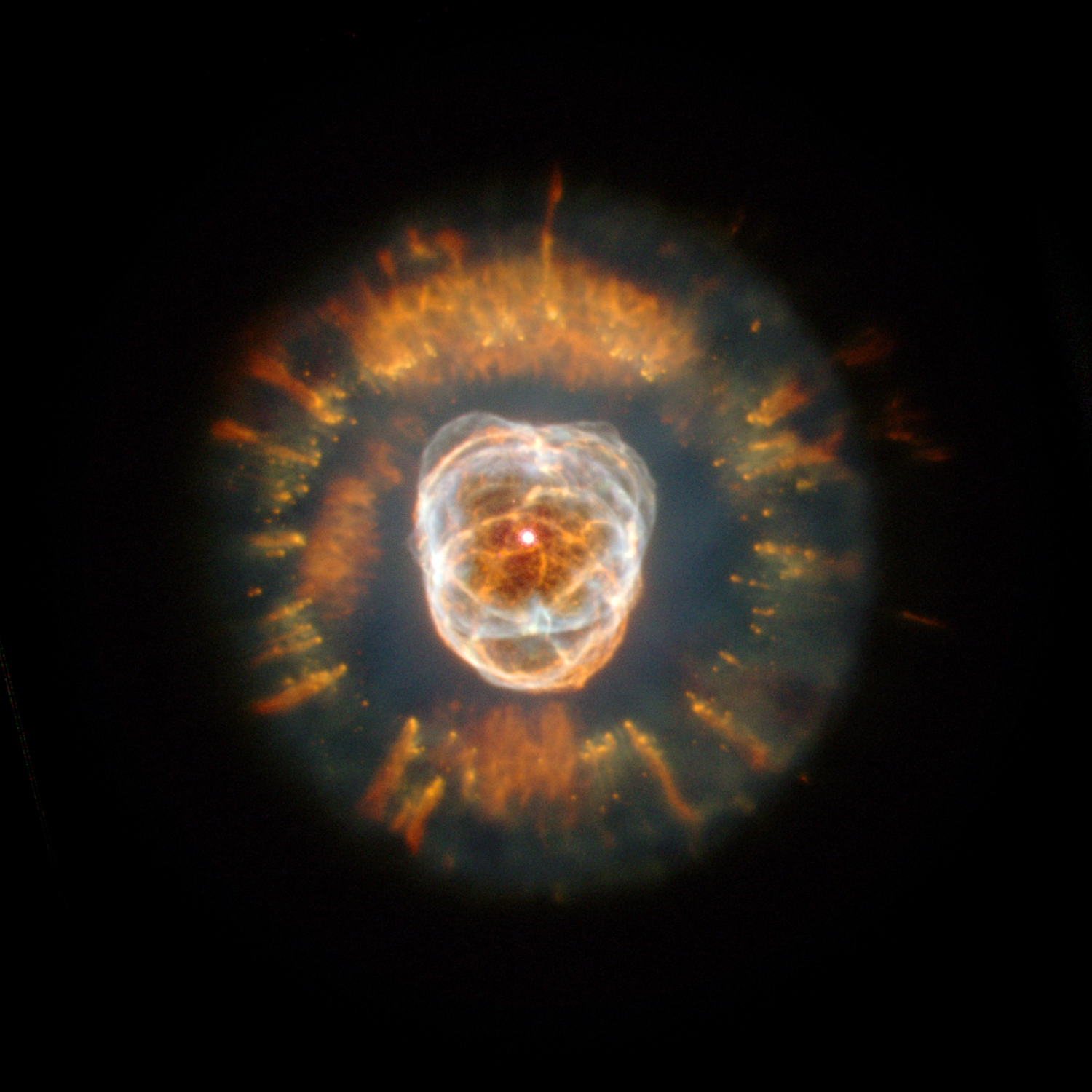
NASA, ESA, Andrew Fruchter (STScI), and the ERO team (STScI + ST-ECF)
spacetelescope.com,
Public domain,wikimedia
Another interesting object is the NGC 2392, the Eskimo nebula also referred to as the Clown nebula. The name Eskimo comes from a circular crown of gas that when photographed looks like the hood of a parka worn by the Inuits of Greenland.
Southern Hemisphere: the constellation can be seen at the same time of the year as in the northern hemisphere. At the southern middle latitudes, around February right after sunset, we can find it just above the northern horizon.